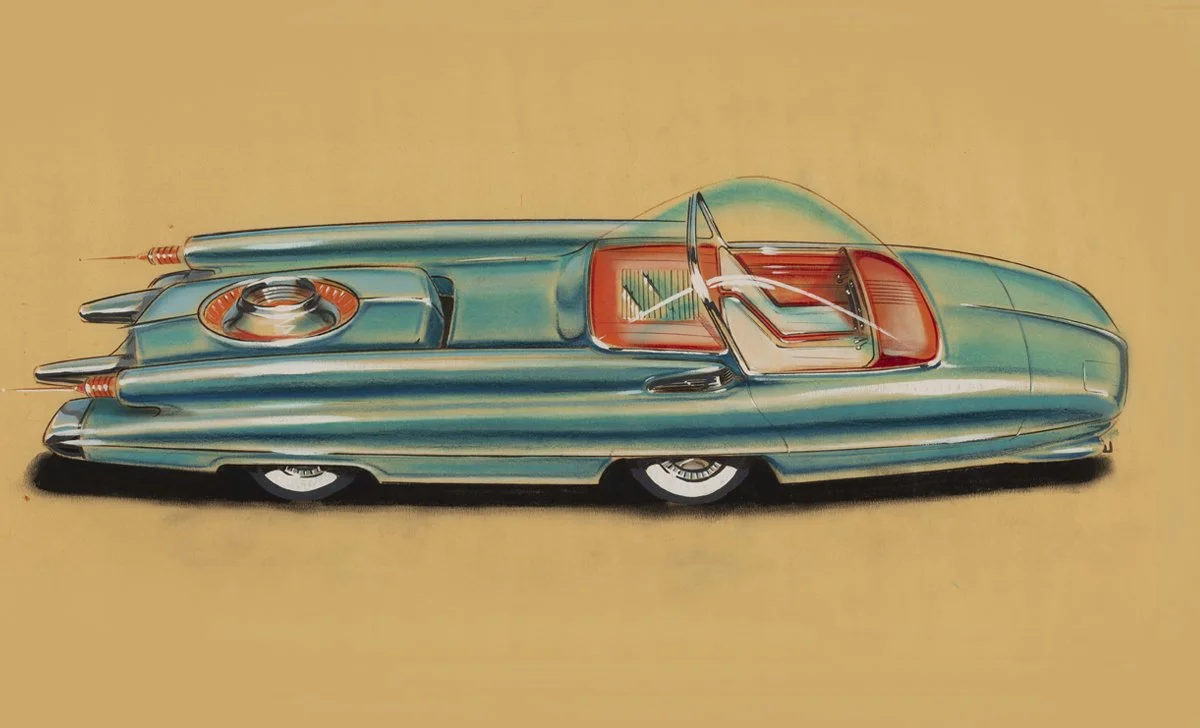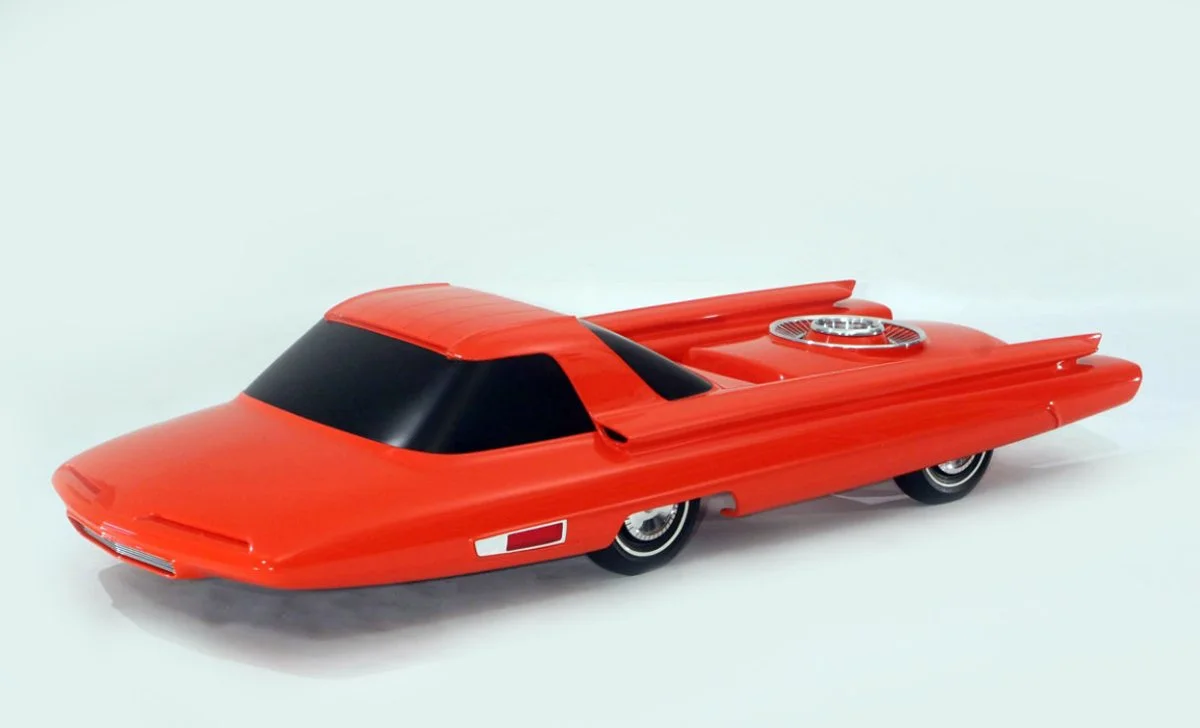The Nucleon is an unrealised concept car designed by the Ford Motor Company in 1957.
In 1945, the publication, The Atomic Age, heralded the untapped use of atomic power in everyday objects and predicted a future where fossil fuels would become obsolete.
Scientists also anticipated that atomic power had applications that would revolutionise modern medicine, food production, transportation, and consumer products.
At the time, Glenn T. Seaborg, who chaired the Atomic Energy Commission, proposed harnessing nuclear energy for powering artificial hearts. Meanwhile, David Dietz, a science journalist, envisioned cars running on a pellet of atomic energy no larger than a vitamin pill.
The concept of an atomic future was further glorified in Las Vegas, Nevada, which had the nickname of the “Atomic City. Tourists flocked to Las Vegas to attend “Dawn Bomb Parties” throughout the 1950’s during the 100 atmospheric nuclear tests at the Nevada Test Site.
In 1957, Ford Motor Company sought to present a glimpse of an atomic-powered future and released a 3/8-scale model of the Ford Nucleon, an atomic powered car concept.

The car featured a power capsule suspended between twin booms that contained a radioactive core for motive power. The reactor would use uranium fission to convert water into high pressured steam, which in turn powered a set of turbines. There are air intakes in the roof and supports that likely provided air to the reactor’s cooling system.
According to Ford’s estimates, the Nucleon could travel over 5,000 miles (depending on the size of the core) before recharging at a dedicated station by installing a new core. The Nucleon’s owner would have multiple choices of core types, such as a fuel-efficient model or a high-performance model.
The passenger compartment featured a sleek one-piece windshield and compound rear window. In some concept model variations there are also dual tail fins likely inspired by 1950’s science fiction.
According to a press statement released by Ford at the time: “Cars such as the Nucleon illustrate the extent to which research into the future is conducted at Fort Motor Company, and point up the designer’s unwillingness to admit that a thing cannot be done simply because it has not been done”.
Header Image Credit : From the collections of The Henry Ford, Dearborn, Michigan
Sources : The Henry Ford







